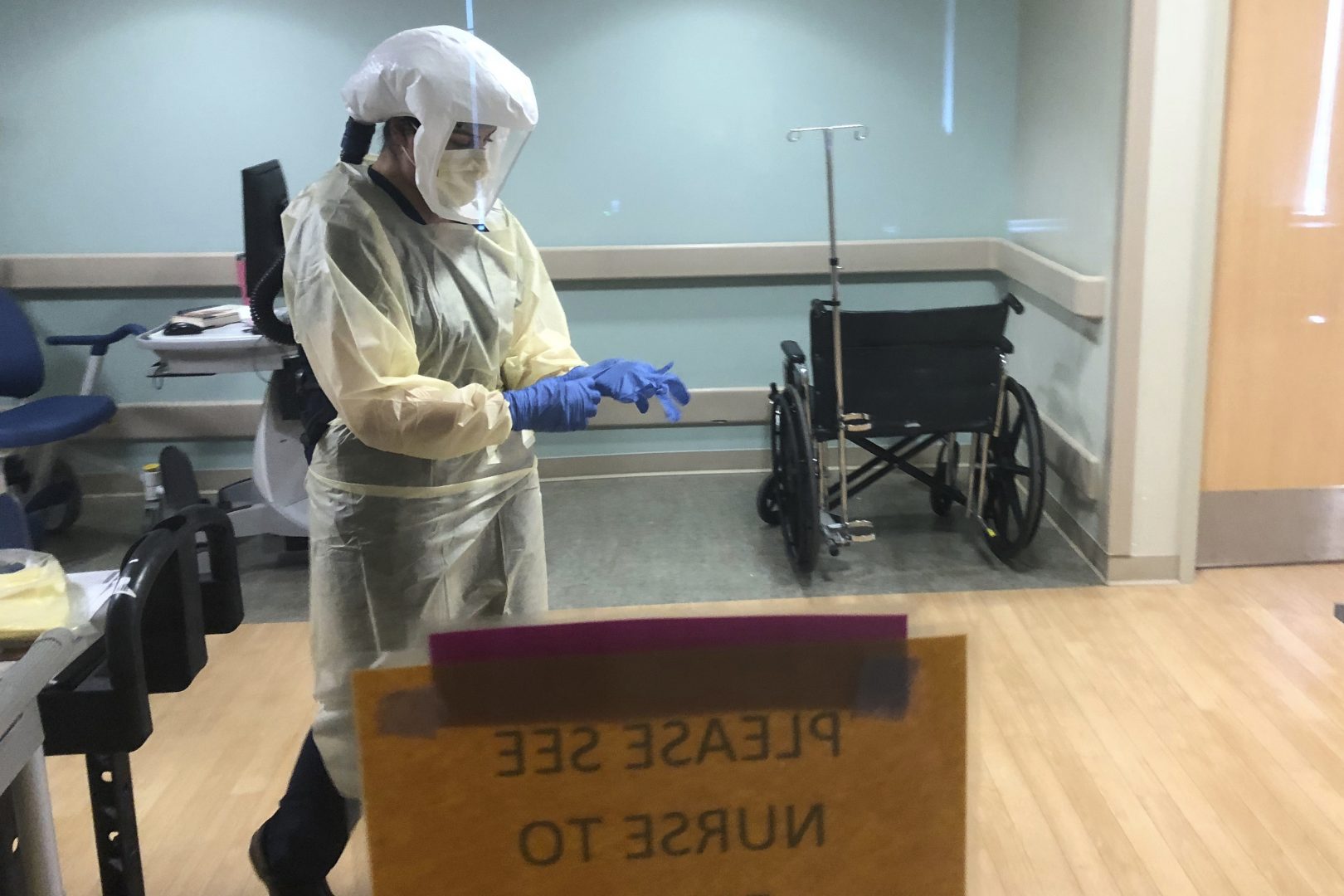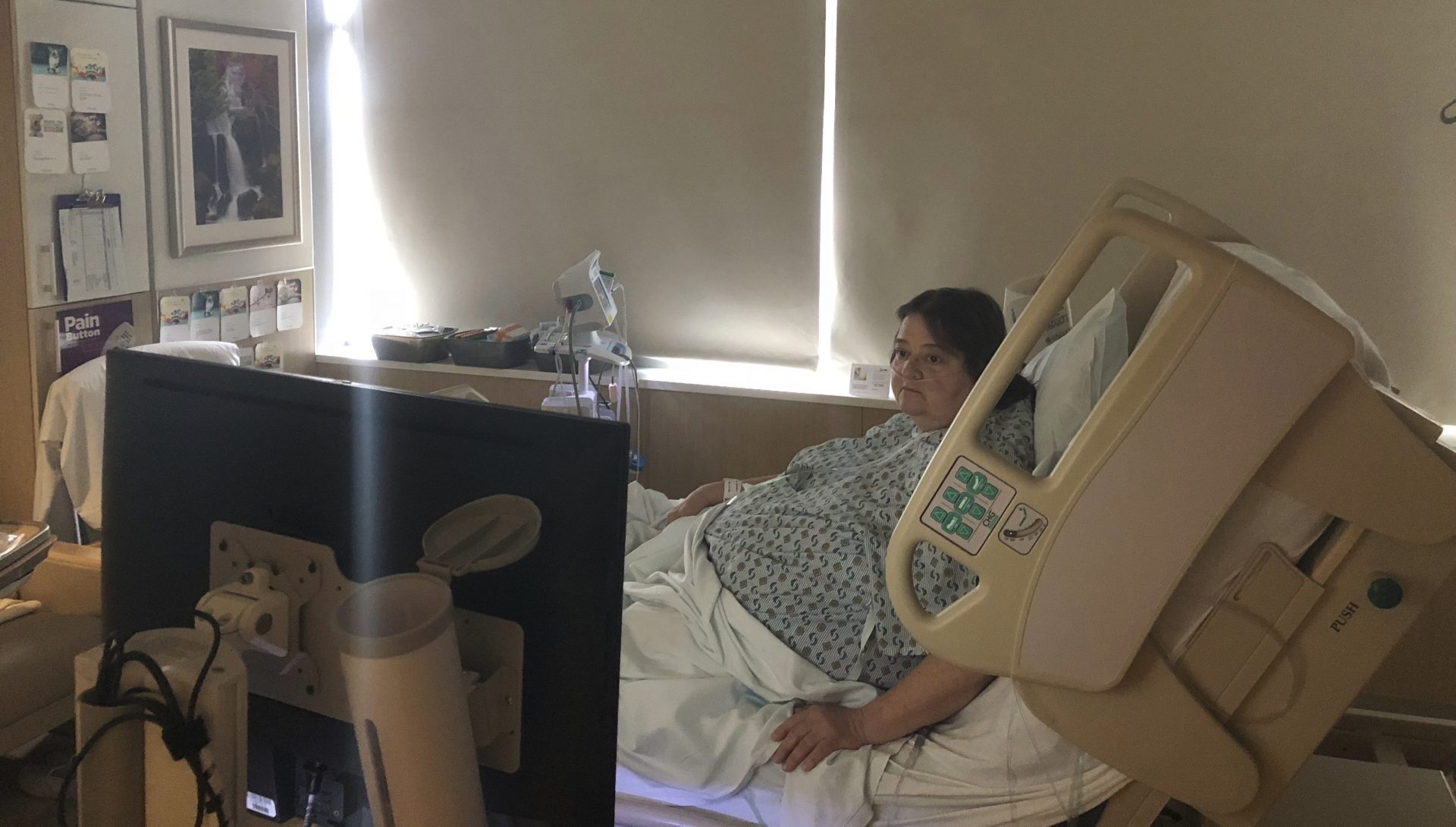
In this photo provided by the UPMC, Dr. Ruba Nicola, chairwoman of family medicine at UPMC East, adjusts her personal protective equipment at the UPMC East hospital in Monroeville, Pa., on April 17, 2020.
UPMC / AP Photo

In this photo provided by the UPMC, Dr. Ruba Nicola, chairwoman of family medicine at UPMC East, adjusts her personal protective equipment at the UPMC East hospital in Monroeville, Pa., on April 17, 2020.
UPMC / AP Photo

UPMC / AP Photo
In this photo provided by the UPMC, Dr. Ruba Nicola, chairwoman of family medicine at UPMC East, adjusts her personal protective equipment at the UPMC East hospital in Monroeville, Pa., on April 17, 2020.
(Pittsburgh) — UPMC says its positivity rate for tests among asymptomatic patients remains at 0.27 percent.
As a precaution, the health care system tests all patients for the virus prior to medical procedures, regardless of whether they have symptoms or a recent COVID-19 exposure.
“With rising cases it would be logical to expect more asymptotic positives. We believe we are not seeing this because we are testing patients coming in for medical procedures, and this population skews to an older age,” said Dr. Graham Snyder, UPMC’s head of infection prevention and hospital epidemiology.
Snyder is referring to the last week and a half, with Allegheny County reporting over 100, sometimes more than 200, new coronavirus cases a day. The county’s contact tracing data show that many of these cases are among young adults, especially those who have recently traveled, or visited a bar or restaurant.

UPMC / AP Photo
In this photo provided by the UPMC, Dorris Kelley, 57, participates in a teleconference interview with The Associated Press at the UPMC East hospital in Monroeville, Pa., on April 17, 2020.
With 118 COVID-19 patients currently hospitalized , UPMC says hospitalization have not kept pace with new cases. That’s even when accounting for the time lag between an increase in the infection rate and when people might need medical care. Also the medical system reports that ventitor use among these patients has not spiked.
This spring many hospitalizations and deaths were among nursing home residents, a medically fragile population. In contrast, recent cases are more often found in younger people, who are far more likely to survive the virus.
“Right now, the data indicates that we as a community are doing a good job of protecting those who we’ve learned are most vulnerable to bad outcomes from COVID-19, the frail elderly and those who are immunocompromised,” said Snyder.
Public health and medical professionals warn that the greater the level of coronavirus in a community, the more likely someone of any age is to be infected.
Snyder also said that the strain of coronavirus seen in UPMC patients is a variety that seems to transmit easier but is “less deadly.” Though some disagree that virus has mutated to be less lethal.
“We have a lot to learn,” said Snyder. “While [this information] is important for us to understand how the virus is transmitting in our communities…at the moment it does not change the fundamental protections that we take.”
Another curious pattern Snyder noted is that more recent COVID-19 patients seem to have lower viral loads, which is the amount of virus present in a sample. It seems that the smaller the amount of the virus, the less ill the patient.
“We don’t know why this is, but we suspect that seasonality, particularly humidity, impacts virus transmission,” he said.

Get insights into WITF’s newsroom and an invitation to join in the pursuit of trustworthy journalism.
The days of journalism’s one-way street of simply producing stories for the public have long been over. Now, it’s time to find better ways to interact with you and ensure we meet your high standards of what a credible media organization should be.